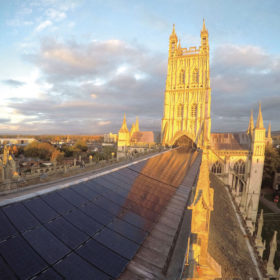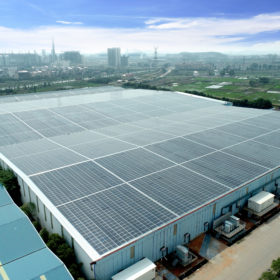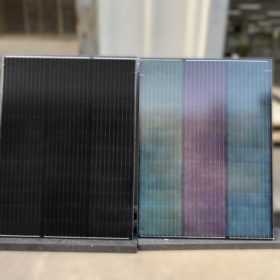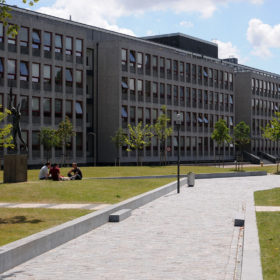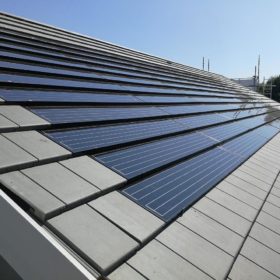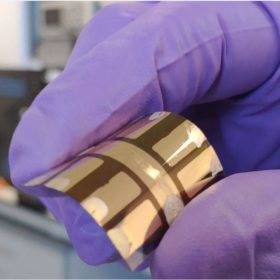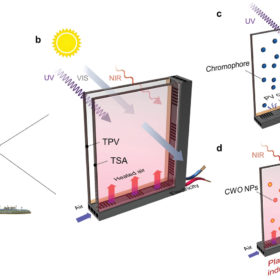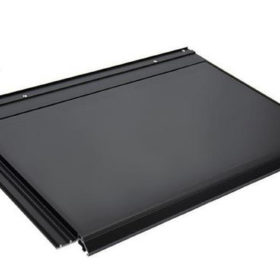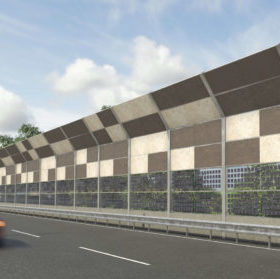The weekend read: Historical and landmarked buildings turn to solar amid changing policies, rising prices
The urgency of rooftop solar uptake has only been accelerated by the current energy crisis, but the spread of PV to historic and landmarked buildings remains limited. In Europe, historic buildings constructed before 1945 represent at least a quarter of total building stock. To boost uptake, some municipalities are considering a loosening of their protection policies, while researchers are finding interesting byways for installation. Furthermore, building integrated PV solutions are being touted as the ideal compromise between aesthetic continuity and new generation opportunities.
China sets BIPV record with 120 MW multi-roof solar project
A new 120 MW solar installation spread across 11 rooftops in China’s Jiangxi province is now the world’s largest single-capacity, building-integrated PV project.
High-efficiency colored BIPV panels
Researchers in China have reported a colorization strategy for solar based on photonic glass. They created solar panels that took on blue, green, and purple hues, while only dropping the efficiency of power generation from 22.6% to 21.5%.
Backward ray tracing for fast energy yield simulations
Scientists in the Netherlands have developed a model to forecast the energy yield of a PV system. It is able to take into account factors such as partial shading and multiple module orientations. Tested against a reference cell and pyranometer, the model showed less than 5% error, and the scientists claim their approach is up to three orders of magnitude faster than more common approaches using complex ray tracing.
New photovoltaic tiles from Estonia
Estonian startup Solarstone has developed two solar tiles with an efficiency of up to 19.5% and an operating temperature coefficient of -0.41% per C. It recently secured €10 million in funds to expand sales across Europe.
Applying perovskite solar cells onto BIPV steel products
Swansea University will collaborate with Indian multinational Tata Steel to investigate perovskite solar cell materials that could be applied directly onto coated steel to make building-integrated PV components. The partnership will add to an “active buildings” project that the Welsh university has been running for several years.
Solar window generates electricity, thermal energy
A research team in Hong Kong has built a solar window that can generate power on the external side via a luminescent solar concentrator and thermal energy on the internal side via transparent solar absorbers.
CIGS solar tile with 14.9% efficiency
Taiwanese manufacturer Eterbright has developed a CIGS solar tile with power output ranging from 26.5 W to 56 W and a temperature coefficient of -0.34% per C. The product is able to withstand a snow load of 5,400 Pa and a wind load ranging from 1,600 Pa to 2,400 Pa.
Canadian consortium wants to deploy photovoltaic noise barriers across North America
A consortium led by building-integrated photovoltaics maker Mitrex wants to install highway noise barriers with integrated solar that have 1.2 MW of capacity per kilometer. The technology is currently in the pilot phase at government entity locations in North America.
‘Solar skin’ set to power Melbourne office tower
With architects and construction companies across the world showing an increasing interest in building-integrated PV, one Australian company has outlined plans to clad an eight-storey building being constructed in West Melbourne with a “solar skin” that will generate almost all of the building’s base power.
